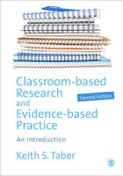Educational Research Methods

A site to support teaching and learning...

Construct Systems
Personal construct theory is an example of a theoretical perspective on the way people make sense of their experiences/worlds.
Kelly considered that individuals construe the world through a system of bipolar constructs, although many of these may be implicit constructs (the person uses them, but may not realise they are doing so). The constructs are the basis of discrimination made during the perceptual-conceptual process.
Kelly compares a person’s construct system to a maze they have built themselves:
“...man develops his ways of anticipating events by construing - by scratching out his channels of thought. Thus he builds his own maze. His runways are the constructs he forms, each a two-way street, each essentially a pair of alternatives between which he can choose.” (Kelly, 1958/1969: 86)
“The labyrinth is conceived as a network of constructs, each of which is essentially an abstraction and, as such, can be picked up and laid down over many, many different events in order to bring them into focus and clothe them with personal meaning. Moreover, the constructs are subject to continual revision, although the complex interdependent relationship between constructs in the system often makes it precarious for the person to revise one construct without taking into account the disruptive effect upon major segments of the system” (Kelly, 1958/1969: 87)
Kelly, G. (1958/1969). Man's construction of his alternatives. In B. Maher (Ed.), Clinical Pystchology and Personality: The selected papers of George Kelly (pp. 66-93). New York: John Wiley & Sons.
This is a personal site of Keith S. Taber to support teaching of educational research methods.
(Dr Keith Taber is Professor of Science Education at the University of Cambridge.)
2016
